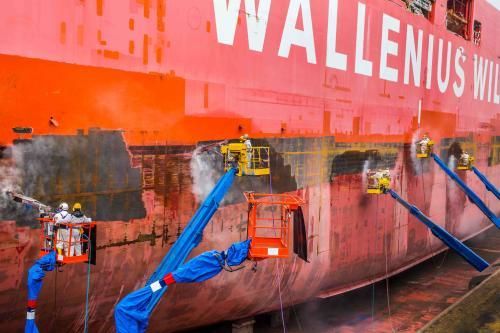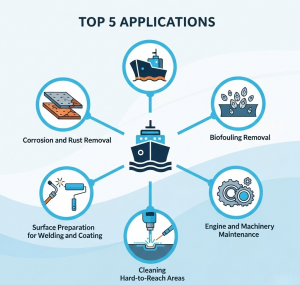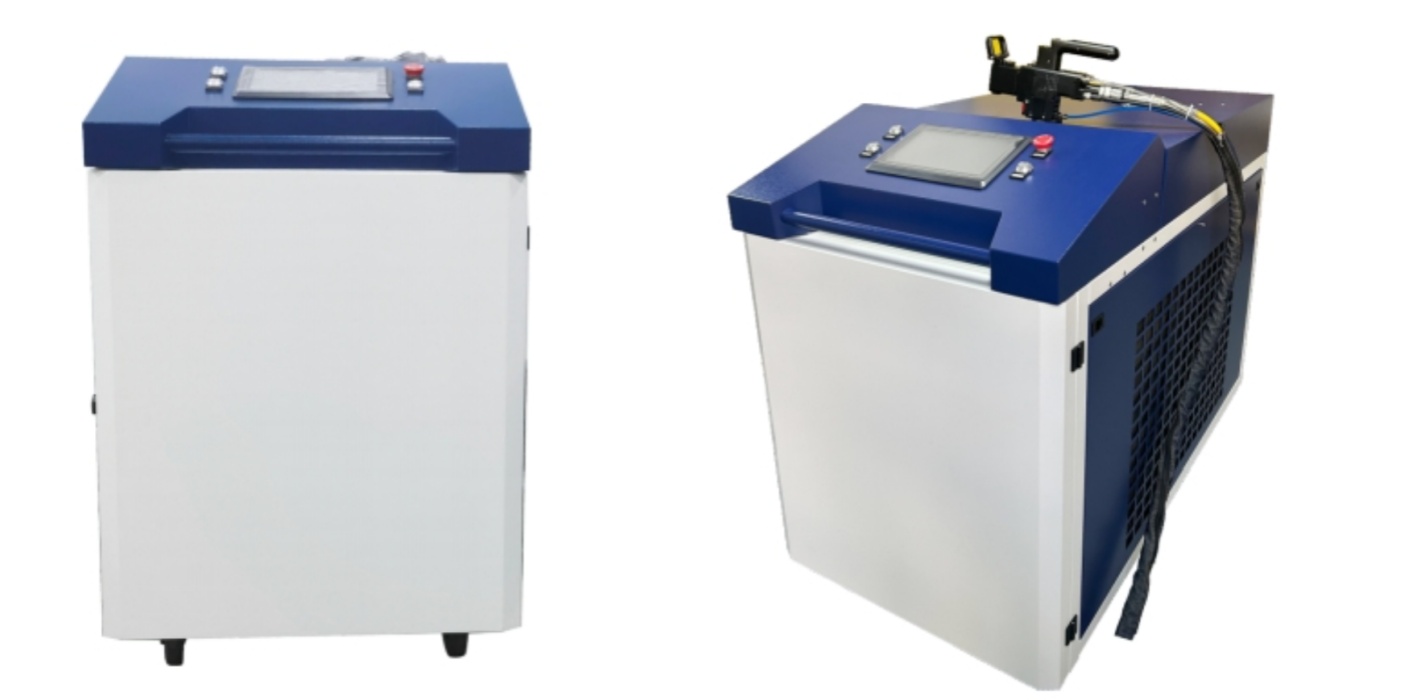Exploring laser cleaning ship applications unveils a high-tech solution to the maritime industry’s oldest and costliest challenges. For decades, the relentless battle against rust, stubborn paint, and biofouling has relied on messy, outdated methods like sandblasting. But what if you could strip a ship’s hull with the power of light?
Laser cleaning is a non-contact, non-damaging process that is safer for workers, kinder to our oceans, and incredibly precise. This article dives into the essential applications of laser cleaning for ships, explains how this technology works, and shows why it’s becoming the smarter alternative to traditional methods.
How Does Laser Cleaning Actually Work on a Ship?
So, how do you clean a massive steel ship with just a beam of light? The secret is a process called laser ablation.
Imagine a highly focused beam of light pulsing thousands of times per second. When this light hits a surface, the contaminants—like rust, paint, or grime—absorb the energy and are instantly vaporized, turning into a fine dust that is safely vacuumed away.
The magic lies in the “ablation threshold.” Every material has a different energy level at which it vaporizes. Rust and paint have a low threshold, while the steel hull beneath has a very high one. The laser is precisely calibrated to deliver just enough energy to remove the unwanted layer without ever harming the metal. Think of it as a microscopic jackhammer of light that only targets the dirt and leaves the pavement untouched.
Top 5 Laser Cleaning Ship Applications in the Marine Industry
Laser cleaning isn’t just one tool; it’s a versatile solution for a wide range of maritime maintenance tasks.
1. Corrosion and Laser Rust Removal
From the hull and deck to anchor chains and winches, rust is a ship’s constant enemy. Laser rust removal on ships is one of the most powerful applications of this technology. It strips away corrosion even in tight corners and on complex surfaces, leaving a perfectly clean metal surface ready for coating, all without damaging the ship’s structural integrity.
2. Surface Preparation for Welding and Coating
The longevity of a paint job or the strength of a weld depends entirely on the quality of the surface preparation. Laser cleaning creates the high-quality clean surface.
Superior Coating Adhesion: By removing all contaminants, it ensures new paint bonds perfectly, extending its life and protective qualities.
Flawless Welds: A laser-cleaned surface is free of oxides, oils, and other impurities, resulting in stronger, defect-free welds.
3. Biofouling Removal and Hull Cleaning
Biofouling—the buildup of barnacles, algae, and other marine organisms—increases drag, wastes fuel, and can transport invasive species. Laser cleaning offers a highly effective solution.
Underwater laser cleaning systems, often deployed on robotic crawlers or ROVs, can remove this marine growth without harming anti-fouling coatings. Even more impressively, the process lethally damages the organisms so they simply wash away, preventing the spread of invasive species and helping ship owners comply with strict IMO regulations.
4. Maintenance of Engines and Machinery
The engine room is the heart of a ship, filled with sensitive and complex machinery. Laser cleaning is precise enough to remove grease, carbon, and grime from engine components, propellers, and rudders—often without requiring full disassembly. This drastically reduces maintenance downtime and keeps critical systems running efficiently.
5. Cleaning Complex and Hard-to-Reach Areas
What about the areas that sandblasting can’t easily reach? Laser cleaning excels here. The technology’s precision makes it perfect for cleaning weld beads, grooves, and small internal spaces where traditional tools simply can’t fit or would cause damage.
Real-World Proof: Who Is Already Using Laser Cleaning?
This isn’t just theory; laser cleaning is already being adopted by major players in the laser cleaning marine industry.
The U.S. Navy, for example, has been a pioneer in using laser systems for corrosion control on its fleet. Their research found it to be a faster, safer, and more cost-effective method for preparing surfaces on ships, including aircraft carriers. This powerful endorsement highlights the technology’s reliability and effectiveness in the most demanding environments.
The Future is Automated and Underwater
The evolution of laser cleaning is entering a new phase, with the next significant advancements being driven by automation and robotics. For example, autonomous robotic crawlers could be developed to clean entire ship hulls in dry dock. These systems will be capable of operating 24/7, delivering perfectly consistent results across vast surfaces.
Furthermore, the development of underwater laser cleaning drones and ROVs promises a future of proactive maintenance. These systems could continuously clean hulls while a ship is in service, preventing biofouling from ever becoming a significant problem. This shift from reactive to proactive maintenance could save the shipping industry billions in fuel costs and dry-docking fees.
Make the Switch to a Smarter, Greener Ship
Laser cleaning is more than just a new tool; it’s a fundamental shift toward smarter, safer, and more sustainable ship maintenance. It directly addresses the industry’s biggest challenges: reducing operational costs, complying with environmental regulations, and improving worker safety.
While the initial investment for laser systems is higher than traditional equipment, the long-term savings in labor, material waste, and extended asset life result in a significantly lower total cost of ownership. By eliminating hazardous waste and reducing downtime, laser technology offers a clear path to a more efficient and responsible maritime future.
The adoption of this technology elevates the very standard of vessel care. It delivers a surface prepared with unmatched precision, ensuring superior coating adhesion and maximizing the long-term structural integrity of these critical maritime assets.
Frequently Asked Questions (FAQ)
Q1: Is laser cleaning safe for the ship’s hull?
A: Yes. The process is precisely calibrated to target only the contaminants. It’s a non-contact method that doesn’t cause the pitting, erosion, or mechanical stress associated with sandblasting, preserving the integrity of the steel or aluminum substrate.
Q2: What happens to the removed paint and rust?
A: It is instantly vaporized by the laser’s energy. A built-in fume extraction system immediately captures the vaporized material and fine dust, filtering the air and leaving virtually no secondary waste behind.
Q3: Can laser cleaning be performed while the ship is in the water?
A: Yes, for certain applications. While large-scale paint and rust removal is typically done in dry dock, specialized underwater systems are now used for removing biofouling from a ship’s hull while it is afloat.
Post time: Aug-19-2025












